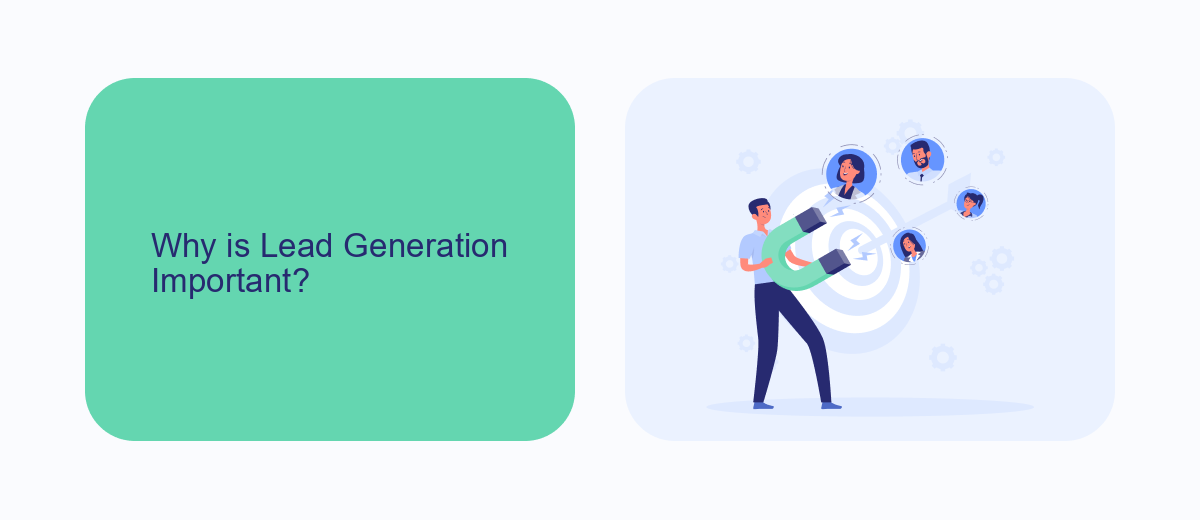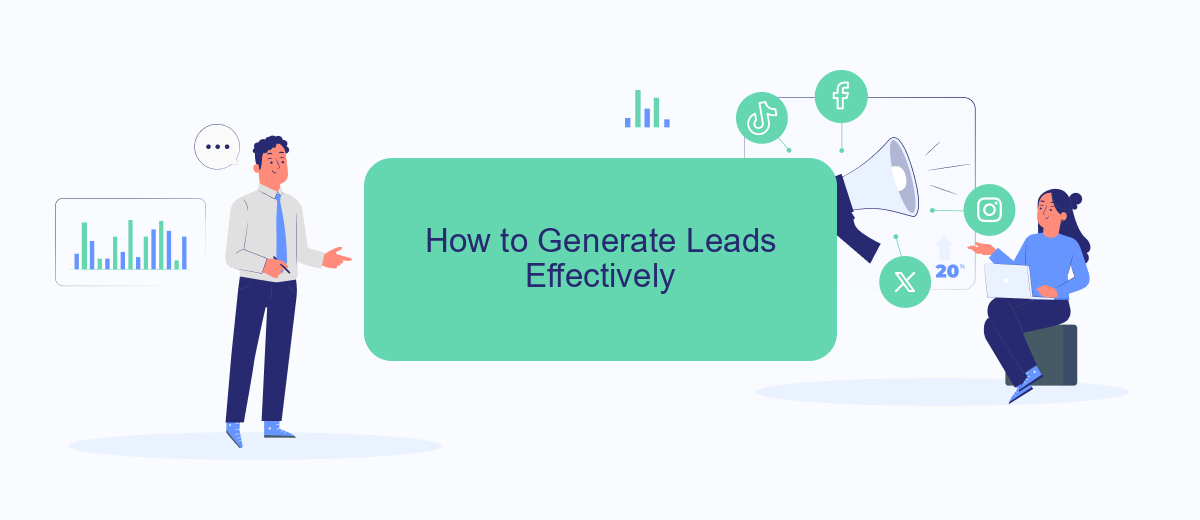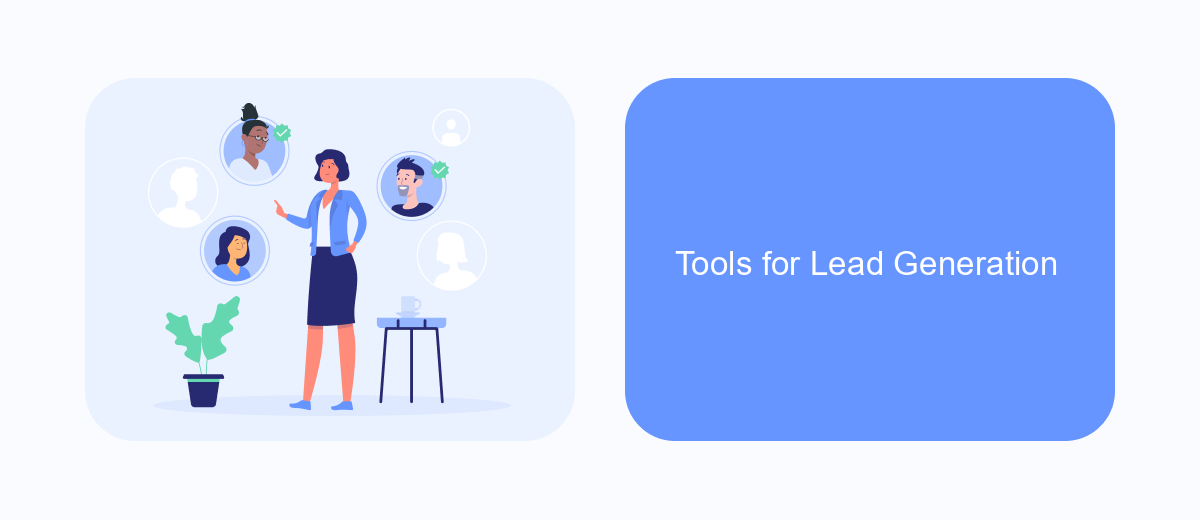Lead generation is a critical process for any business aiming to grow and succeed. In this guide, "Lead Generation for Dummies," we will break down the basics of attracting and converting prospects into potential customers. Whether you're new to the concept or looking to refine your strategies, this article will provide you with practical insights and actionable steps to boost your lead generation efforts.
What is Lead Generation?
Lead generation is the process of attracting and converting strangers and prospects into someone who has indicated interest in your company's product or service. It is a crucial part of the sales funnel, as it helps businesses identify potential customers and guide them through the buying journey.
- Identifying target audience
- Creating engaging content
- Utilizing social media channels
- Implementing email marketing strategies
- Leveraging SEO techniques
Effective lead generation often involves integrating various tools and services to streamline the process. For instance, SaveMyLeads can automate the capture and transfer of lead data from multiple sources, ensuring that no potential customer is overlooked. By using such services, businesses can save time and focus on nurturing and converting leads into loyal customers.
Why is Lead Generation Important?

Lead generation is crucial for any business aiming to grow and succeed in today's competitive market. By identifying and attracting potential customers, companies can build a robust sales pipeline, ensuring a steady stream of revenue. Effective lead generation strategies help businesses target the right audience, increasing the chances of converting prospects into loyal customers. This not only boosts sales but also enhances brand awareness and market presence.
Moreover, lead generation allows businesses to gather valuable data on their prospects, enabling more personalized and effective marketing efforts. Utilizing tools and services like SaveMyLeads can streamline the process by automating lead collection and integration with various platforms. This saves time and resources, allowing teams to focus on nurturing and converting leads. In essence, lead generation is the lifeblood of a thriving business, driving growth and fostering long-term success.
How to Generate Leads Effectively

Generating leads effectively is crucial for any business looking to grow and succeed. It involves attracting potential customers and converting them into interested prospects. Here are some steps to help you generate leads effectively:
- Identify Your Target Audience: Understand who your ideal customers are and tailor your marketing efforts to reach them.
- Create Valuable Content: Develop engaging and informative content that addresses the needs and pain points of your audience.
- Optimize Your Website: Ensure your website is user-friendly and optimized for search engines to attract organic traffic.
- Utilize Social Media: Leverage social media platforms to connect with your audience and promote your content.
- Implement Email Marketing: Use email campaigns to nurture leads and keep them engaged with your brand.
- Use Lead Generation Tools: Integrate tools like SaveMyLeads to automate lead capture and streamline your processes.
By following these steps, you can create a robust lead generation strategy that consistently attracts and converts potential customers. Remember to continuously analyze and refine your approach to stay ahead of the competition and meet your business goals.
Tools for Lead Generation

Effective lead generation requires the right set of tools to capture, manage, and nurture leads efficiently. These tools help streamline the process, ensuring you can focus on converting leads into loyal customers.
One essential tool for lead generation is a Customer Relationship Management (CRM) system. A CRM helps you track interactions with potential leads and manage your sales pipeline. Additionally, marketing automation platforms can assist in nurturing leads through personalized email campaigns and targeted content.
- CRM Systems: Tools like HubSpot, Salesforce, and Zoho CRM.
- Marketing Automation: Platforms such as Mailchimp, Marketo, and ActiveCampaign.
- Lead Capture Forms: Services like Typeform and JotForm.
- Integration Services: SaveMyLeads for automating lead data transfer between platforms.
Using these tools effectively can significantly enhance your lead generation efforts. For instance, integration services like SaveMyLeads can automate the process of transferring lead data from your lead capture forms to your CRM, ensuring no lead is missed. By leveraging these tools, you can create a seamless and efficient lead generation process that drives business growth.
Best Practices for Lead Generation
Effective lead generation begins with understanding your target audience. Conduct thorough market research to identify the demographics, preferences, and behaviors of your potential customers. This will help tailor your marketing strategies to attract the right leads. Additionally, create compelling content that addresses the pain points and needs of your audience. Utilize various formats such as blogs, videos, and infographics to engage your audience and drive traffic to your lead capture forms.
Another best practice is to leverage automation tools to streamline your lead generation process. Services like SaveMyLeads can be instrumental in this regard. SaveMyLeads allows you to automate the transfer of leads from various platforms directly into your CRM, ensuring that no lead is lost and your sales team can follow up promptly. Furthermore, integrate your marketing efforts across multiple channels, such as social media, email marketing, and SEO, to maximize your reach and capture leads from diverse sources. Consistent monitoring and optimization of your strategies based on performance metrics will also help in continually improving your lead generation efforts.
- Automate the work with leads from the Facebook advertising account
- Empower with integrations and instant transfer of leads
- Don't spend money on developers or integrators
- Save time by automating routine tasks
FAQ
What is lead generation?
Why is lead generation important for my business?
How can I automate my lead generation process?
What are some effective lead generation strategies?
How do I ensure the quality of my leads?
Are you using Facebook Lead Ads? Then you will surely appreciate our service. The SaveMyLeads online connector is a simple and affordable tool that anyone can use to set up integrations for Facebook. Please note that you do not need to code or learn special technologies. Just register on our website and create the necessary integration through the web interface. Connect your advertising account with various services and applications. Integrations are configured in just 5-10 minutes, and in the long run they will save you an impressive amount of time.

